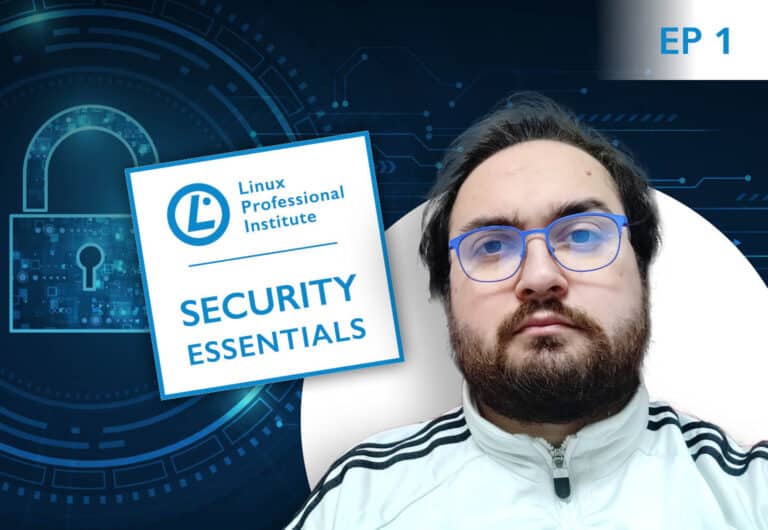Cybersecurity: Top and Bottom of It

Cybersecurity has evolved beyond being a mere buzzword; it has become a multifaceted concern we must address in our daily lives.
Networks: the safe way
The increasing digitization of recent years has elevated security practices in the IT realm to a critical level for both insiders and everyday technology users. Keeping this in mind, it is… essential – pun intended – to be well-prepared and have a solid understanding of the risks associated with working on a network and the precautions that can be taken.
LPI’s Security Essentials
It is to address this need, the Linux Professional Institute (LPI) recently released the Security Essentials certification.
As a Member of the LPI Membership program, I could take the exam for free when it was still in beta and provide feedback on the questions, in this way giving a contribution to the global FOSS community which relies on LPI’s for high quality, and regularly upgraded, exams.
The Security Essentials certificate by LPI is specifically tailored for individuals who are new to the IT security field and need to establish a strong foundational knowledge to approach the subject with confidence.
The exam’s objectives start with a general introduction to the importance of security in the broader IT context. Then they cover more specific topics such as data management, cryptography (including PKI and cryptography elements on the web, in email, and storage devices), application and network security, and more.
For a complete list of objectives, including the weight assigned to each topic, refer to the LPI page and wiki.
The exam is well-structured and adheres to the same canonical metrics as other LPI exams. It comprises multiple-choice and fill-in-the-blank questions, totaling 40 questions to be completed within a maximum time limit of 60 minutes.
A different perspective
As a cybersecurity professional (currently studying for the LPIC-3 Security certification myself), I wholeheartedly endorse the Security Essentials certification as a valuable introduction to the intricate world of IT security. While it may not instantly turn someone into an IT security expert (and that is not its intention, after all), it lays a solid foundation for developing a more comprehensive cybersecurity training strategy. I attempted to outline this concept in more detail in my article here.
Furthermore, I highly recommend the Security Essentials certification to individuals who may not have a strictly technical background but are interested or need to venture into the world of technology. Understanding the fundamental elements of cybersecurity is crucial in today’s digital landscape.
The Security Essentials certification serves as a valuable starting point for anyone looking to embark on a cybersecurity journey. From a business perspective, it presents a remarkable opportunity to establish a solid and certified awareness of cybersecurity. Companies that invest in certifying their employees in Security Essentials demonstrate their commitment to making life easier for their Blue Team (I admit, I am a bit biased here). By minimizing the risks stemming from trivial mistakes, a cybersecurity-aware business can operate more efficiently and securely, reducing the likelihood of critical issues like data loss, ransomware, and phishing.
In conclusion, as the complexity of cybersecurity challenges continues to grow in our digital world, having a solid foundation of knowledge is essential for anyone who interacts with screens or carries a smartphone in their pocket. While, fortunately, the pandemic is behind us, the “Cyber hygiene” is very much needed for all of us, both for our personal and working life.
The Security Essentials certification from LPI serves as an excellent starting point for individuals new to the field of IT security, and I highly recommend it to those seeking to enhance their understanding of cybersecurity best practices. Whether you are a seasoned IT professional or someone exploring the world of technology, this certification equips you with the necessary knowledge and skills to proactively protect your digital assets.
With the introduction of this new “security-oriented” certification, I am excited to share some of my know-how. The objectives will be explained in detail, step by step, allowing us to grasp the importance of certain sensitive topics and explore subjects that are new to the target audience of this exam.
